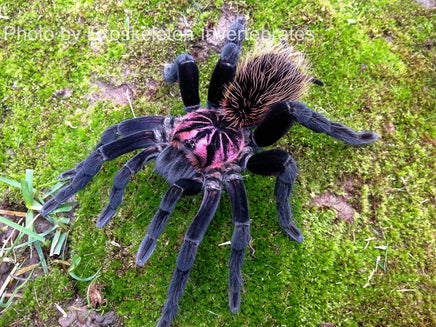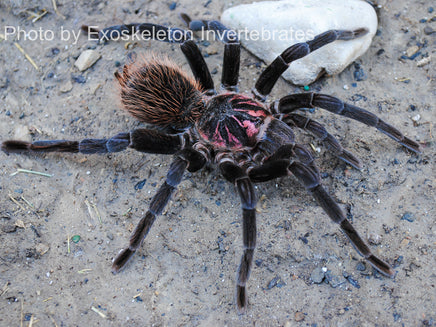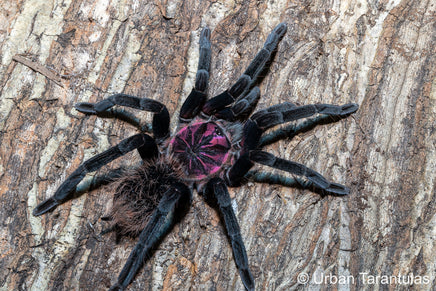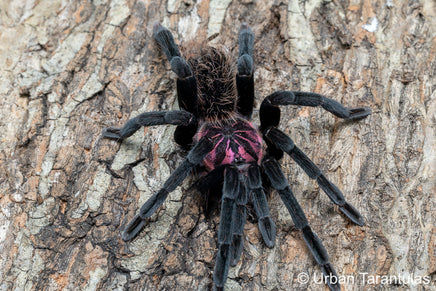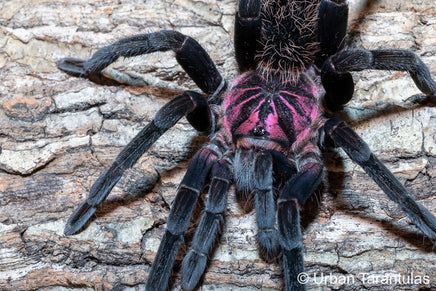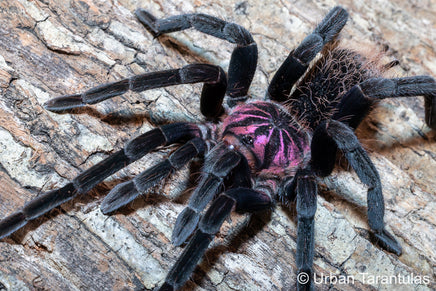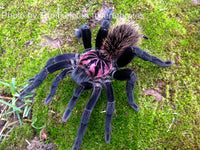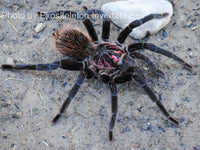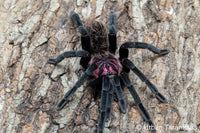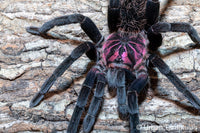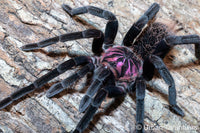🕷️ Xenesthis immanis – Colombian Lesser Black
Xenesthis immanis isn’t just another big spider—it’s legendary. Deep velvety black, a subtle violet shimmer under the light, and that thick, heavy-bodied look that gives it a serious presence. It’s native to the lush mountains of Colombia, and it brings that moody, humid vibe right into your collection. This is the species that defines Xenesthis—bold, beautiful, and full of character.
🕸️ Care Details:
- Temperature: Ideal range is 72°F to 78°F. They prefer cooler, humid setups—avoid temps over 80°F.
- Humidity: Keep it around 70%. I maintain moist substrate with good ventilation to avoid mold buildup. Never swampy.
-
Housing (Terrestrial species):
- Babies: A 1oz to 4oz deli container with pinhole ventilation works perfectly. Let me know during checkout if you want one for free—I won’t include it unless asked.
- Juveniles: An enclosure 2 to 3 times their leg span. Add cork bark, moss, and deep moist substrate.
- Adults: These get massive. I recommend a 12x8" enclosure minimum, with deep substrate and room to move. They like to stay out in the open, so a natural display setup works great.
🪳 Feeding:
Crickets, roaches (Dubia, red runners, hissers), all do great. I mix it up for mine.
For slings, baby roaches or pinheads.
If prey is too large, crush the head and leave it in—your tarantula will scavenge.
Every now and then, I offer a pinky or small reptile as a treat, but not often. High calcium can cause constipation issues in tarantulas—so moderation is key.
🔍 In-Depth Facts:
- Latin name: Xenesthis immanis
- Common names: Colombian Lesser Black, Giant Colombian Tarantula
- Locale: Colombia – mainly the cloud forests and moist montane regions near the Andes
- Category: Terrestrial – not a heavy burrower, usually stays visible. Might web lightly near its hide.
- Size: Females can hit 8.5–9 inches; males slightly smaller and leggier
- Urticating hairs: Yes—reluctant to kick unless provoked
- Growth rate: Medium, but with regular feeding and proper warmth, they grow steadily
- Life span: Females 15+ years, males about 3–4 years
- Recommended levels: Ideal for experienced keepers or those looking for a large, slow-moving display tarantula with personality. A staple species for collectors who appreciate bulk and beauty.
Stay Connected:
- Instagram – I post updates, feeding clips, and enclosures here
- YouTube – For care guides and deep dives
- Facebook – See what others are saying
- TikTok – For more content and short clips
⚠️ Safety Disclaimer:
Experiencing a tarantula bite is an extremely rare occurrence, and it's important to note that there have been no recorded fatalities due to a tarantula bite. The venom potency varies across species, with Old World tarantulasgenerally having stronger venom than their New World counterparts. Within the Old World category, the Poecilotheriagenus is known for having particularly potent venom.
It's crucial to approach tarantulas with respect and understanding. If you happen to get bitten, which is unlikely, the key is to stay calm. In most cases, the discomfort is superficial and subsides within a few minutes to a few hours. However, bites from species with more potent venom may result in symptoms lasting up to a week. Remember, larger tarantulas tend to have more venom than smaller ones.
Please be aware that I cannot assume responsibility for bites. Tarantula handling should be done at your own risk. In my 11 years of experience with these creatures, I have only been bitten once, by a species with highly potent venom. While the experience was painful, the symptoms had completely disappeared after a week.
Handle tarantulas responsibly, and always prioritize your safety and the well-being of the tarantula.
